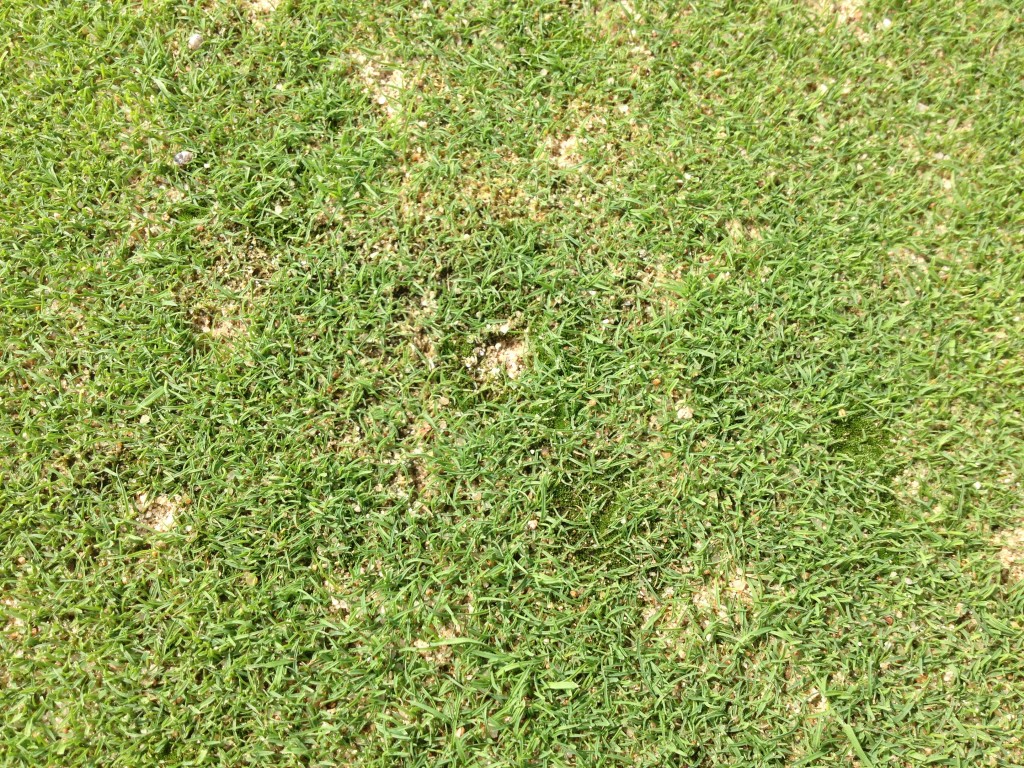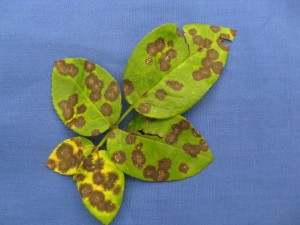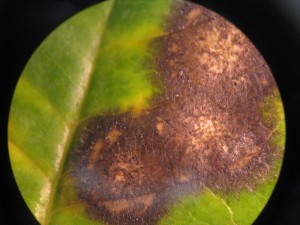(By Jared Hoyle; KSU Turfgrass Research and Extension)
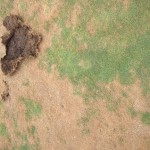 I know we still have a little bit of time before we need to apply grub control but it is better to be prepared instead of trying to catch up after grubs have destroyed your turf.
I know we still have a little bit of time before we need to apply grub control but it is better to be prepared instead of trying to catch up after grubs have destroyed your turf.
In the summer time we typically see dead spots in turf due to many factors but one of those could be annual white grubs. The annual white grub is one of the most common grub pests in Kansas. Masked chafers emerge from the soil around mid June in Kansas then after mating they deposit eggs back into the soil. They then grow and develop in the soil and mature around September. This is when we typically see damage in turf, once the grubs are large. But if we can get them before they get big the easier it is to control.
So for control measures, you can apply it preventatively or as a rescue treatment (after you have already seen damage.
Preventative controls should be applied during that time when the grubs are mating and laying eggs. This is typically in June/July time frame. Using a preventative insecticide gives you greater flexibility. Products for preventative applications contain the systemic active ingredients; imidacloprid, chlorantraniliprole, clothianidin, thiamethoxam and halofenozide. For a complete list of chemicals go here;
http://www.bookstore.ksre.ksu.edu/pubs/mf2635.pdf
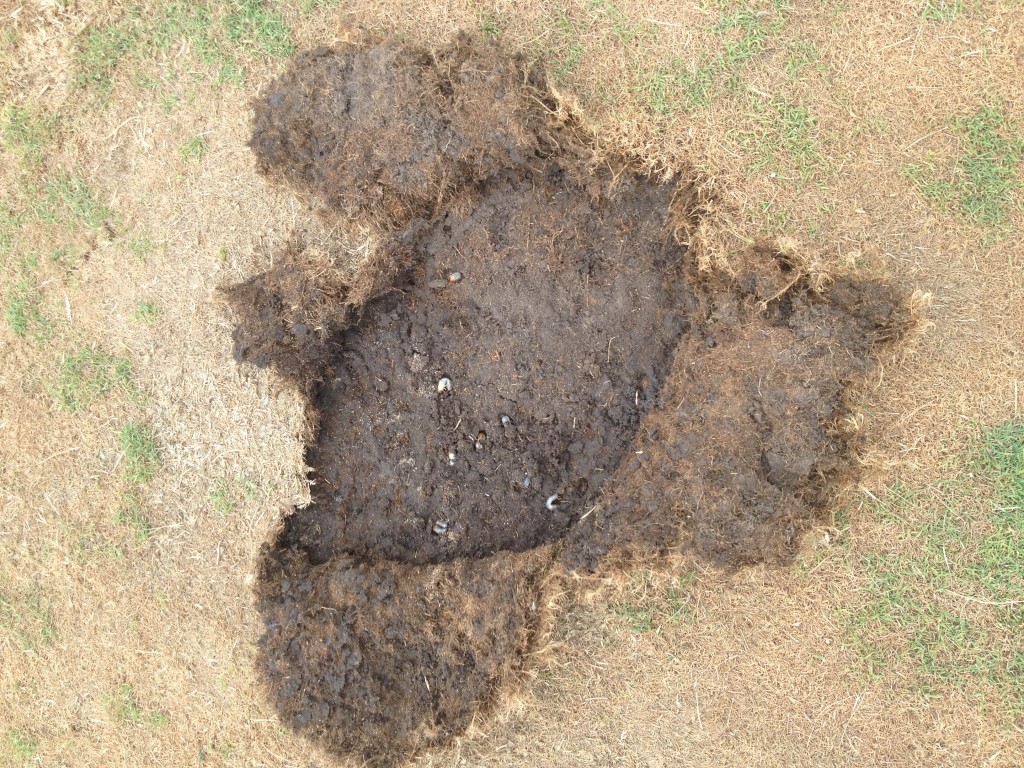 Rescue treatments are “wait-and-see” if you have grubs type of application. If you have grubs you can easily pull up the turf like carpet because all the roots are gone and you also might see skunk, raccoon and bird damage where they have tried to eat the grubs. Rescue treatments consist of carbaryl and trichlorfon.
Rescue treatments are “wait-and-see” if you have grubs type of application. If you have grubs you can easily pull up the turf like carpet because all the roots are gone and you also might see skunk, raccoon and bird damage where they have tried to eat the grubs. Rescue treatments consist of carbaryl and trichlorfon.
For more information check out the link above!
Always remember to READ THE LABEL for the correct rate, turfgrass tolerance, and specific instructions before application!!!
***Mention of trade names or commercial products in this article is solely for identification purposes and does not imply recommendation or endorsement, nor is criticism implied of similar products not mentioned by Kansas State University.***
Don’t forget to follow me on twitter @KSUTurf.
Also, visit our facebook page www.facebook.com/KSUTurf
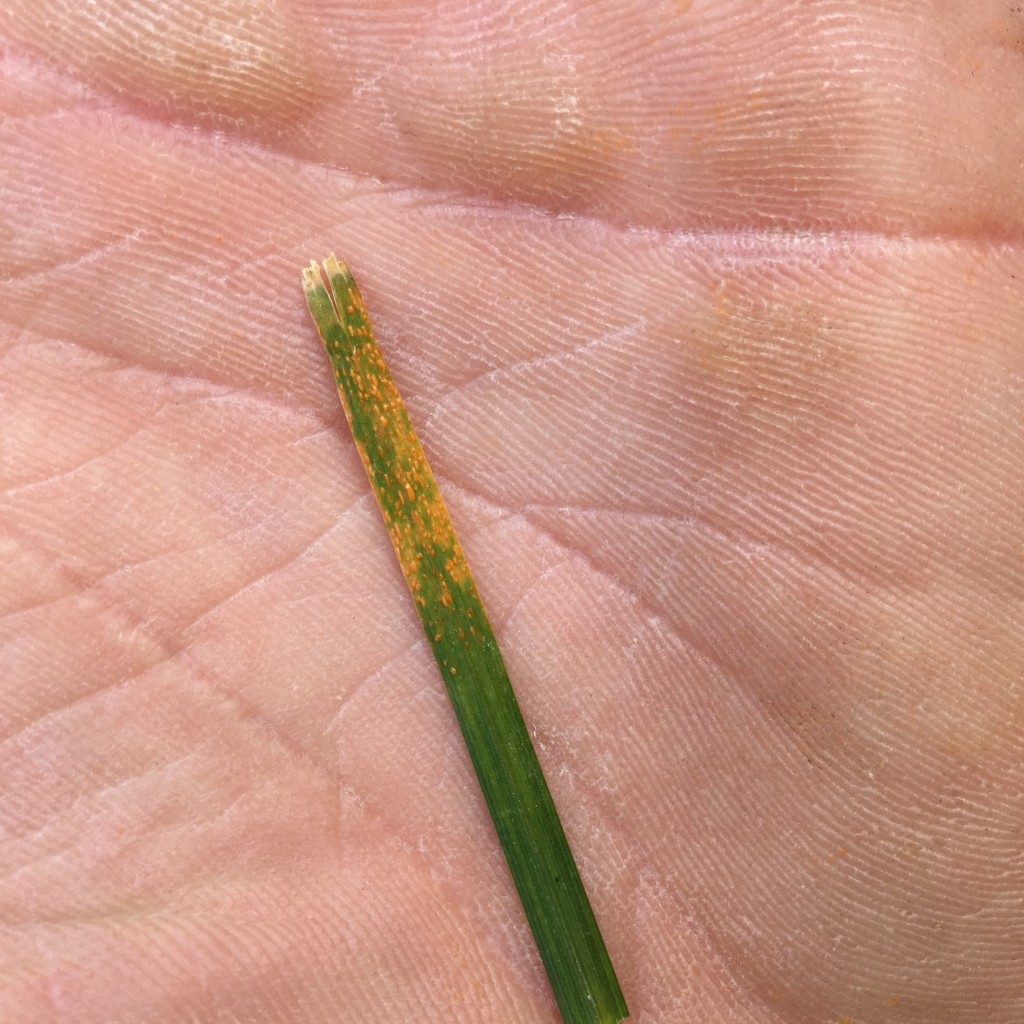

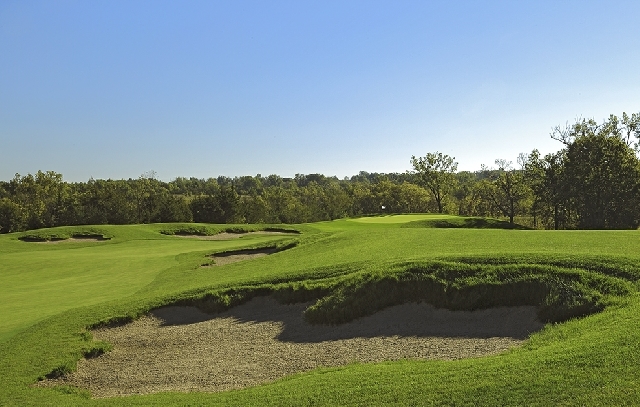 KGCSA Scholarship & Research Tournament will be held Tuesday, June 14 at Firekeeper Golf Course. The 240-acre course is located across the street from the Prairie Band Casino & Resort, just 15 minutes north of Topeka. The tournament fills up quickly and is on a first-come basis.
KGCSA Scholarship & Research Tournament will be held Tuesday, June 14 at Firekeeper Golf Course. The 240-acre course is located across the street from the Prairie Band Casino & Resort, just 15 minutes north of Topeka. The tournament fills up quickly and is on a first-come basis. 